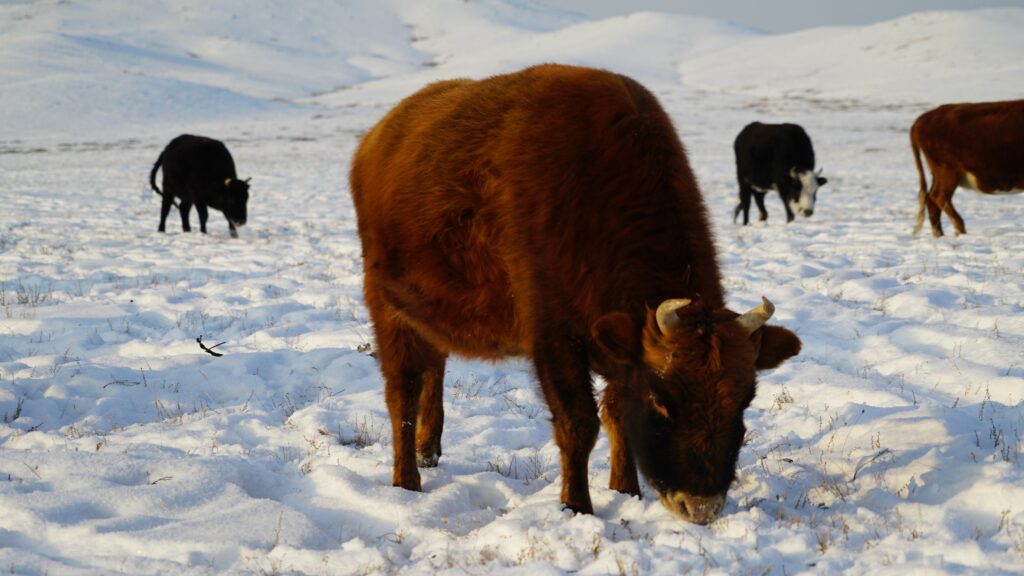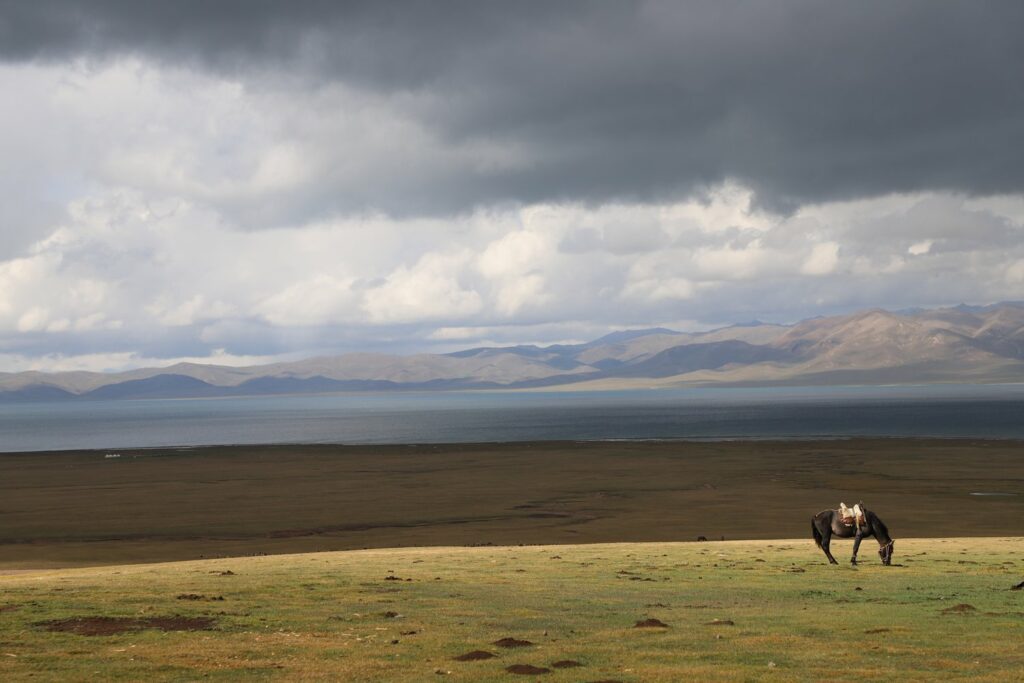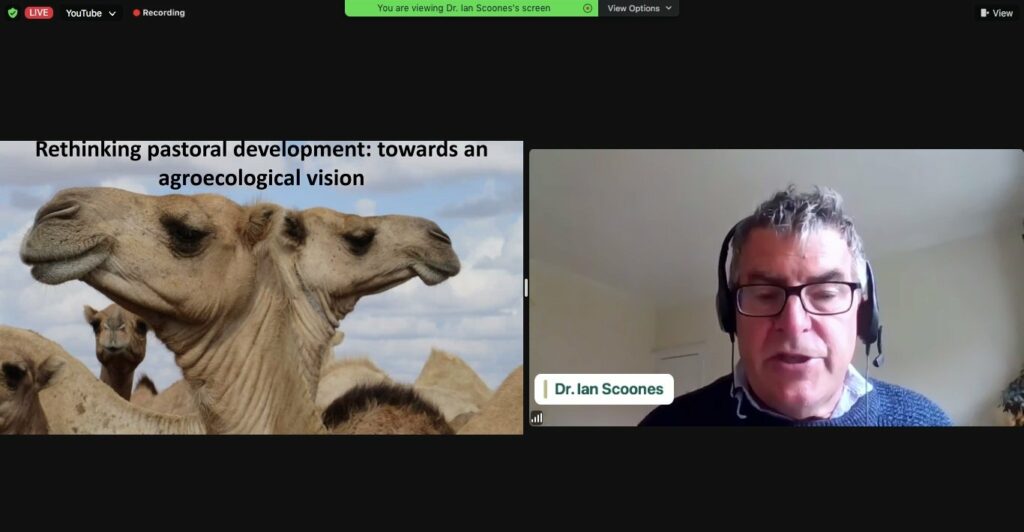From the steppes of Kyrgyzstan to the vast plains around Mount Kenya, the Agroecology Fund is proud to support pastoralist initiatives demonstrating that agroecology is an approach that can be applied to different food systems.
An age-old, traditional way of life for Indigenous communities across the world, pastoralism upholds many of the core principles of agroecology: synergy, soil health and land governance, amongst others.
However, despite its immense value, pastoralism faces significant threats and challenges in the modern world, with the encroachment upon pastoral lands by competing land uses, and frequent marginalization in policy-making and land tenure systems.
In the face of widespread misunderstanding surrounding the pastoralist way of life – as well as campaigns of disinformation – the Agroecology Fund took the opportunity to host a webinar which we hoped would challenge stereotypes and myths, and provide a space for discussion and learning.
The virtual convening was attended by almost 150 participants, from international journalists, to pastoralist allies, to Agroecology Fund donors and grantee partners.
First, we heard from Indira Raimberdy, Executive Director of the Peace Building Center, and Kuluipa Akmatova, a researcher with the Rural Development Foundation, two inspiring women who are part of the Golden Hoof Collaborative (GHC). GHC is an alliance promoting the spiritual, environmental and material security of seven Indigenous groups in Kyrgyzstan through native livestock breeding.
GHC seeks to revive the Kyrgyz horse and the Buryat cow, two indigenous breeds which have been adapting to local ecosystems for millennia and, as such, are particularly well-adapted to the harsh conditions of the region, including its long and cold winters. These conditions are far too extreme for most introduced livestock, meaning that if native breeds like the Kyrgyz horse and the Buryat cow become extinct – a real eventuality if not for GHC’s work – local pastoralists will lose the only way of life and livelihood they have ever known. Bringing these breeds back from the brink of extinction, through careful research and experimentation, is a way for these Indigenous communities to preserve their traditional knowledge, reclaim their cultural and spiritual identity, and ultimately achieve food sovereignty.


“We belong to nomadic nations where aboriginal animals were a real part of people’s lives,”
– Indira Raimberdy, Executive Director of the Peace Building Center
“One of the reasons we chose to work with agroecology and indigenous livestock breeding is because this is the most tangible area where traditional knowledge can be applied.”
Equally importantly, the loss of indigenous livestock would threaten the delicate balance of these communities’ natural environments. This could have profound implications for the planet at large. A report by the Intergovernmental Panel on Climate Change highlights that improved landscape stewardship of the sort practiced by the nomadic pastoralists in Central Asia is fundamental to cooling the planet.
Indira and Kuluipa explained some of the challenges faced by the nomadic peoples, including rapidly increasing air temperatures and unpredictable seasons due to climate change, as well as Kyrgyzstan’s recent political crises which have set back national strategic planning surrounding livestock management.
Another significant challenge is the isolation of these rural communities from international platforms, networking spaces and funding. They are deprived of serious financial and technical support to scale their work up and out.
Next, we heard from Mali Ole Kaunga, the director of the Indigenous Movement for Peace Advancement and Conflict Transformation in Kenya (IMPACT), an organization that works to secure pastoralist rights, support Indigenous Peoples’ land stewardship, and fortify community food security. Ole gave an overview of the pastoralist way of life, noting its richness, diversity, and emphasis on communal living.
“Pastoralism is not a homogenous practice or form of livelihood,” he explained.
“There are nomadic pastoralists, but some semi-nomadic, where a section of the family moves to another area where pastures and water [are] accessible during that part of the season.”
Keeping livestock plays an important role in pastoralists’ cultural and social lives, as they sometimes use the animals to resolve conflicts, or to cleanse themselves spiritually. Ole quoted a local saying: “The land is the heart and the cow is the soul of the family.”


IMPACT was one of the founders of the Pastoralists Alliance for Resilience and Adaptation in Northern Rangelands. The pastoralist network’s acronym, PARAN, is the Masaai word for “sharing”.
Pastoralists share their landscape with wildlife, communities and developers. Unfortunately, the areas managed by pastoralists are often of growing interest to wildlife conservation projects, which has resulted in conflicts between pastoralist communities and conservation NGOs.
Ole explained the situation faced by the pastoralists IMPACT works with in Kenya, a country in which there are around 10 million Indigenous people, and “high competition for resources in already fragile ecosystems”. Large-scale investments in land ownership is becoming a growing challenge for pastoralists, with land changing hands quickly and with little or no consultation with local communities. The recent displacement of the Masaai in Tanzania is a troubling example. Moreover, agriculture policies generally tend to favor crop production, rather than traditional pastoralist food production which relies on shared resources. Meanwhile, clean energy projects such as wind farms which serve urban settlements take up vast swathes of Indigenous land. A positive climate solution thus diminishes local communities’ capacity to produce their own food. Prioritizing wildlife conservation, tourism and renewable energy development creates a “hierarchy of benefits” whereby traditional governance structures are undermined and community mobility is compromised.
Ole further spoke out against misinformation surrounding pastoralism, driven by researchers, policymakers and the media, which spreads the narrative that pastoralists degrade their own land, and must reduce their livestock in order to be environmentally sustainable.
Dr Ian Scoones spoke next to help dismantle this harmful narrative.
“The assumptions that rangelands are degraded through grazing and that they need tree planting to be restored need to be critiqued,” emphasized Dr Scoones.
“We know that rangelands are open areas with high levels of variability. They are maintained by pastoralists through grazing and sometimes fire.”
He also noted that negative assumptions surrounding pastoralism result in policies which constrain pastoralism to fixed, settled, intensive forms of livestock rearing.
“The policies focus on stability, on simplification, on management, on control; a very particular type of modernization,” he stated.
Part of this stereotyping is the assumption that all livestock rearing is inherently harmful to the environment due to methane emissions.
“It’s not the meat that is the issue – it’s the process by which these things are produced,” explained Dr Scoones.
“Different livestock systems have very different impacts and it is important to differentiate between industrial farming and pastoralism.”
He maintained that livestock rearing done in a sustainable fashion – as pastoralists practice it – can in fact have potential benefits for the environment, through carbon sequestration.

Dr Scoones closed by bringing the discussion back to the webinar’s principal topic: how pastoralism and agroecology can come together in an integrated food system.
“If we look beyond these myths and negative assumptions towards the actual practices and logics of pastoralists in relation to environment, breeding, livelihoods and marketing, we see that these Indigenous practices overlap with what we generally understand as agroecology – working with nature, generating sustainability, becoming rooted in local economies.”
We are grateful to those who attended the webinar, to the speakers for taking the time to share their experiences with us, and most importantly, to the pastoralists themselves who show us how to safeguard culture and rights while obtaining diverse foods from diverse landscapes.
